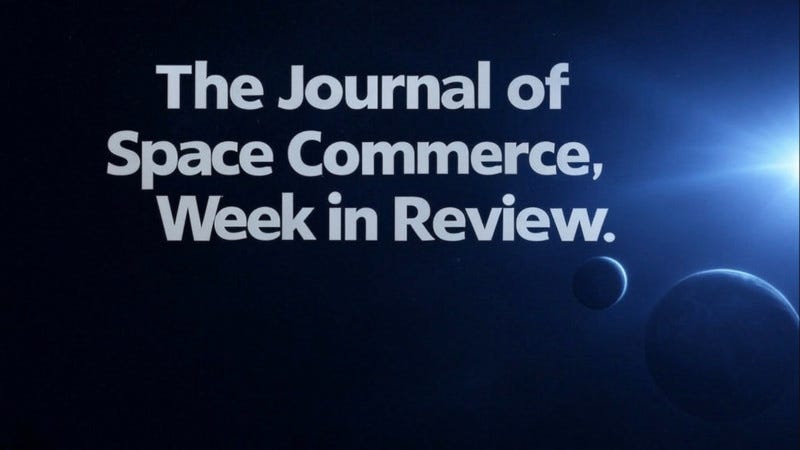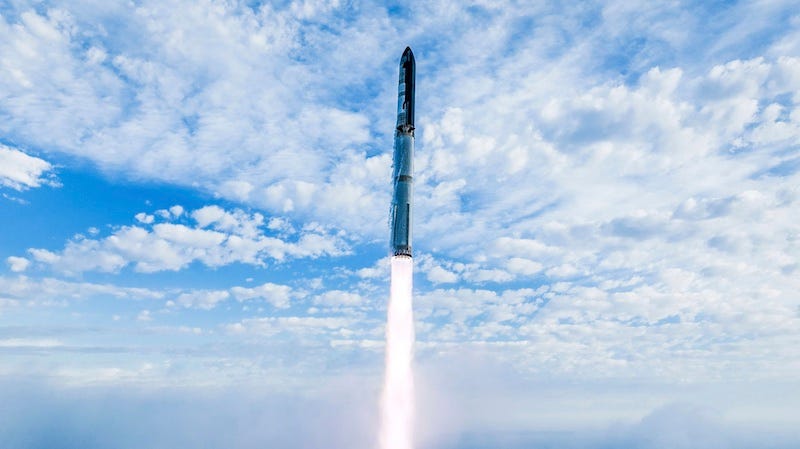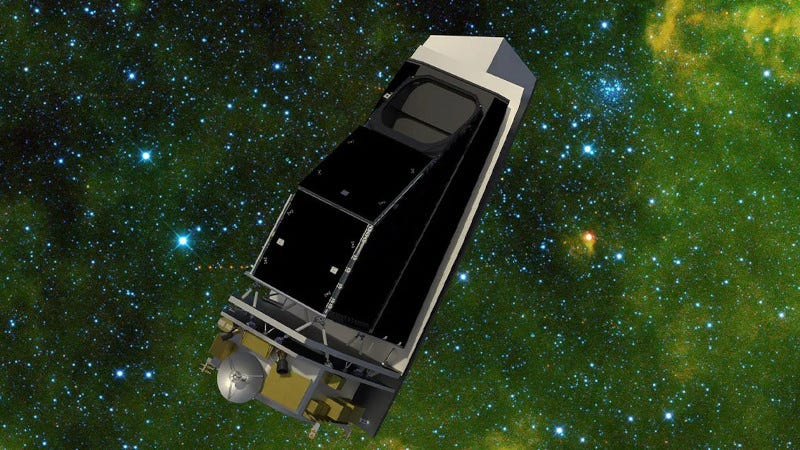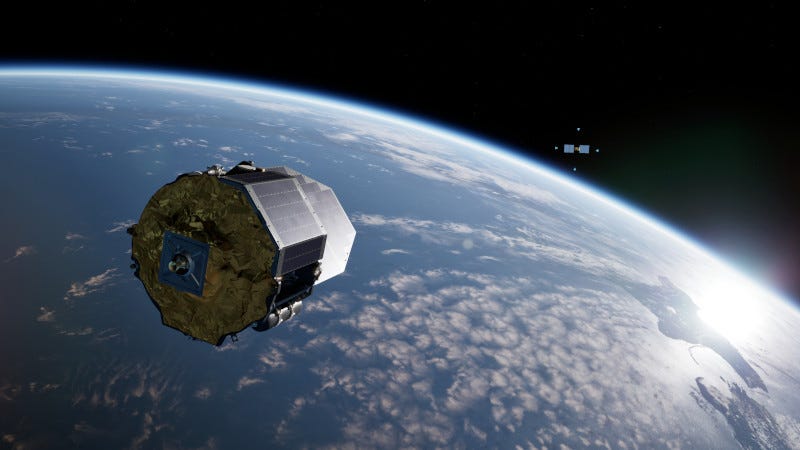Starship tries again for orbit, and Intuitive Machines is on its way back to the Moon. I'm Tom Patton, and here are some of the top stories from The Journal of Space Commerce this week.
SpaceX has updated its projection for the 8th Starship test flight to not earlier than Monday, March 3. The launch window will open at 5:30 p.m. CT.
The launch was originally planned for last Friday, but it was delayed for unspecified reasons. The upcoming flight will target objectives not reached on the previous test, including Starship’s first payload deployment of Starlink Simulators and multiple reentry experiments geared towards returning the upper stage to the launch site for catch. The flight also includes the launch, return, and catch of the Super Heavy booster.
Extensive upgrades to Starship’s upper stage debuted on the previous flight test, focused on adding reliability and performance across all phases of flight. Starship’s forward flaps have been upgraded to significantly reduce their exposure to reentry heating while simplifying the underlying mechanisms and protective tiling. Redesigns to the propulsion system, including a 25 percent increase in propellant volume over previous generations, and additional vehicle performance and the ability to fly longer duration missions. And the vehicle’s avionics underwent a complete redesign, adding additional capability and redundancy for increasingly complex missions like propellant transfer and ship return to the launch site.
SpaceX has also released the results of its investigation following the anomaly on the previous test flight.
-0-
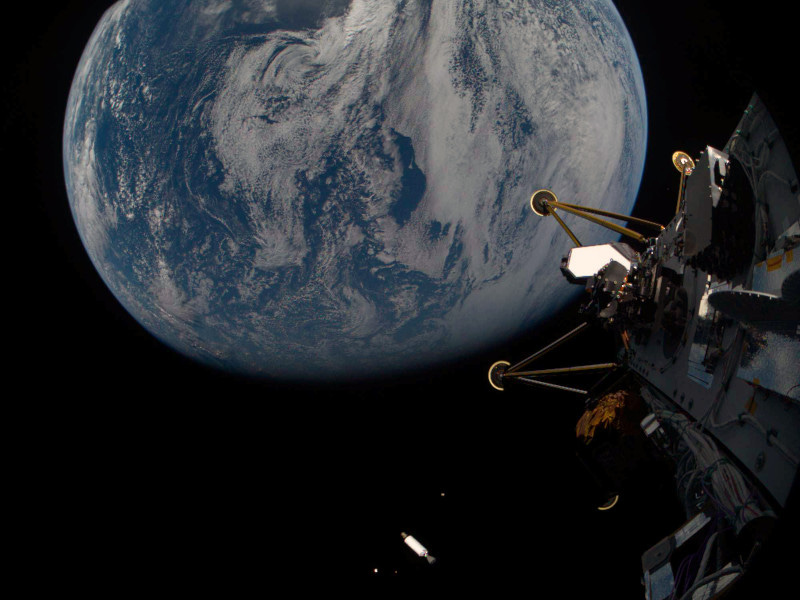
There are two missions scheduled to land on the Moon this coming week.
Carrying NASA instruments as part of the NASA’s Commercial Lunar Payload Services initiative and Artemis campaign, Intuitive Machines’ IM-2 mission launched on Wednesday aboard a SpaceX Falcon 9 rocket from the Kennedy Space Center in Florida. Intuitive Machines’ lunar lander is scheduled to touch down on Thursday, March 6, on a plateau in the Moon’s South Pole.
Once on the Moon, the NASA CLPS investigations will aim to measure the potential presence of volatiles or gases from lunar soil – one of the first on-site demonstrations of resource use on the Moon. In addition, a passive Laser Retroreflector Array on the top deck of the lander will bounce laser light back at any future orbiting or incoming spacecraft to give them a permanent reference point on the lunar surface. Other technology instruments on this delivery will demonstrate a robust surface communications system and deploy a propulsive drone designed to hop across the lunar surface.
NASA’s Lunar Trailblazer spacecraft, which launched as a rideshare with the IM-2 mission, also began its journey to lunar orbit, where it will map the distribution of the different forms of water on the Moon.
Meanwhile, the Firefly Aerospace Blue Ghost lander is slated to land on the lunar surface today. Firefly reported that all 10 NASA payloads have remained healthy as Blue Ghost approached its final destination, and continued to support science operations along the way.
-0-
On the other side of this planet, the countdown is on for the first launch of Gilmour Space Technologies' Eris rocket. The company announced this week that the Eris launch window will open 'no earlier than' March 15 for the maiden flight of the first Australian-designed and built rocket aiming for orbit.
The news follows final airspace approvals from the Civil Aviation Safety Authority (CASA) and Airservices Australia, clearing the last regulatory hurdle before launch. It also marks the culmination of years of innovative R&D and manufacturing by the Gold Coast-based company, which developed the Eris launch vehicle and Bowen Orbital Spaceport in North Queensland.
The company is backed by private investors including Blackbird, Main Sequence, Fine Structure Ventures, Queensland Investment Corporation, and superannuation funds like HESTA, Hostplus, and NGS Super.
-0-
While NASA has now determined that the recently-discovered "Asteroid 2024 YR4" is not going to impact the Earth in 2032, its discovery may have increased interest in the announcement this week of a launch contract for NASA's Near-Earth Object (NEO) Surveyor mission. NEO Surveyor will detect and observe asteroids and comets that could potentially pose an impact threat to Earth.
NEO Surveyor will be carried into space by SpaceX aboard a Falcon 9 rocket from the Kennedy Space Center in 2027. The total cost to the taxpayer for the launch is estimated to be in the neighborhood of $100 million, which includes the launch service and other mission related costs.
The mission will carry out a five-year baseline survey to find at least two-thirds of the currently-unknown NEOs larger than 460 feet. These are objects large enough to cause major regional damage in the event of an Earth impact. By using two heat-sensitive infrared imaging channels, the telescope can also make more accurate measurements of the sizes of NEOs and gain information about their composition, shapes, rotational states, and orbits.
-0-
The Critical Design Review (CDR) for the VICTUS HAZE mission has been completed by Rocket Lab National Security. The mission will demonstrate launch readiness within 24 hours’ notice, the ability to track and reach a target object, and the ability to identify and characterize on-orbit threats.
Rocket Lab will configure its vertically integrated Pioneer spacecraft to meet the unique requirements of the VICTUS HAZE mission and launch it on the Company’s Electron rocket from Launch Complex 1 in New Zealand.
The successful completion of CDR marks the transition to the production phase of the program, which will encompass integration of the spacecraft and launch vehicle and initiation of ground segment preparations for launch later this year.
-0-
And finally, Blue Origin has announced the six people flying on its NS-31 mission. The all-female crew includes Aisha Bowe, Amanda Nguyen (n-GWEN), Gayle King, Katy Perry, Kerianne Flynn, and Lauren Sánchez, who brought the mission together.
This will be the first all-female flight crew since Valentina Tereshkova’s solo spaceflight in 1963 for the Soviet Union. The flight is tentatively scheduled for this spring.
-0-
Those are just some of the stories this week from The Journal of Space Commerce. If you have been enjoying our content, please consider becoming a paid subscriber. Paid subscribers have first access to our Ex Terra Extra podcasts, as well as in-depth articles where we take a deep dive into many issues important to the new space industry. Your help will keep The Journal of Space Commerce free of advertising and help us maintain our independence. Find out more at www.exterrajsc.com.
Thanks for listening, I'm Tom Patton.




